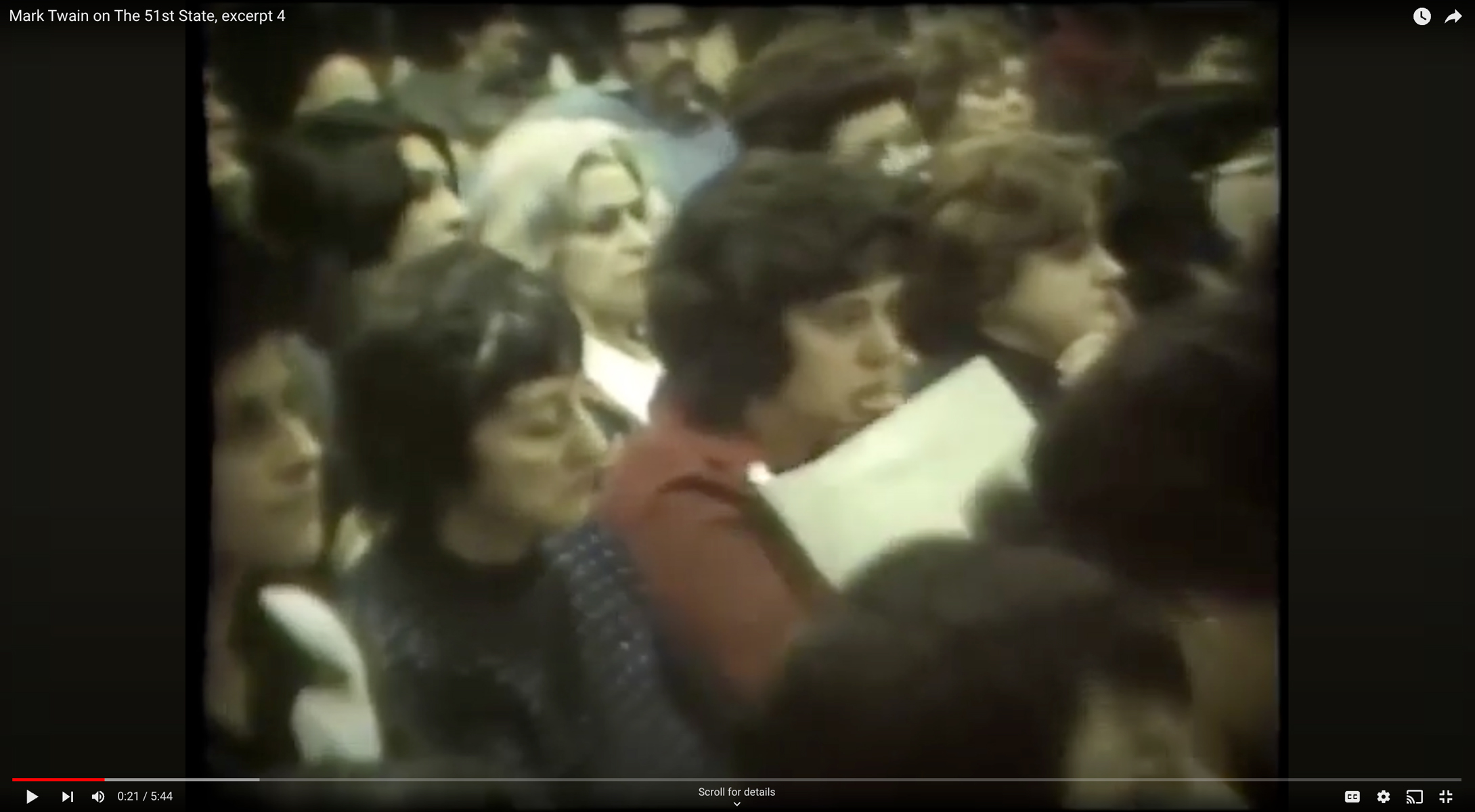Mark Twain on The 51st State, excerpt 4

Date: 1974
Caption: Journalist Richard Kotuk captured Community School District 21’s discussion of a desegregation plan for Mark Twain Junior High School.
The all-white board of Community School District 21 in Brooklyn approved a proposal to desegregate Mark Twain Junior High School by making it a school for “gifted and talented” students - or, in the language of the day, students in “special progress” or “rapid advancement” classes. Historically, because of limited educational opportunities for Black students and racism in the tests and processes that decided whether a student was “gifted,” most of the students in these special classes were white students.
Many white parents in the district opposed the plan, even though their students would have the option to attend a local neighborhood school or travel to Mark Twain for “gifted” classes if they qualified and chose to do so. Students who lived close to Mark Twain, most of whom were Black and Latinx, would not have this option because their local school had been converted to a school that only “gifted and talented” students could attend. If they did not choose to or succeed in applying to Mark Twain, they would travel to another school outside of their neighborhood.
Categories: Brooklyn, K-12 organizing
Tags: racist segregation, white people, court cases, curriculum, disability labels, zoning and student assignment, student achievement, white liberalism, ableist ideas, democracy
This item is part of "School Governance and Democratic Control" in "How Did New York City Segregate its Schools?"
Item Details
Date: 1974
Creator: WNET/Channel 13: The 51st State
Source: Richard Kotuk’s YouTube Channel
Copyright: Under copyright. Used with permission.
How to cite: “Mark Twain on The 51st State, excerpt 4,” “WNET/Channel 13: The 51st State”, in New York City Civil Rights History Project, Accessed: [Month Day, Year], https://nyccivilrightshistory.org/gallery/mark-twain-on-51st-state-4.
Questions to Consider
- How do the attitudes expressed by white parents in this section of the video compare to those in other excerpts of the video? How do the attitudes reflect other ideas or policies that you have encountered in this collection of documents?
- The video closes with comments from two parents - one white and one Black. How do their opinions differ? Do these two arguments continue to exist today? Who holds them, and why?
- Black activist Stokely Carmichael, like other community control activists, focused less on desegregation and more on the importance of Black communities having control over their own schools. What do you think Carmichael would have said if he had seen this film from Community School District 21?
References
How to Print this Page
- Press Ctrl + P or Cmd + P to open the print dialogue window.
- Under settings, choose "display headers and footers" if you want to print page numbers and the web address.
- Embedded PDF files will not print as part of the page. For best printing results, download the PDF and print from Adobe Reader or Preview.
